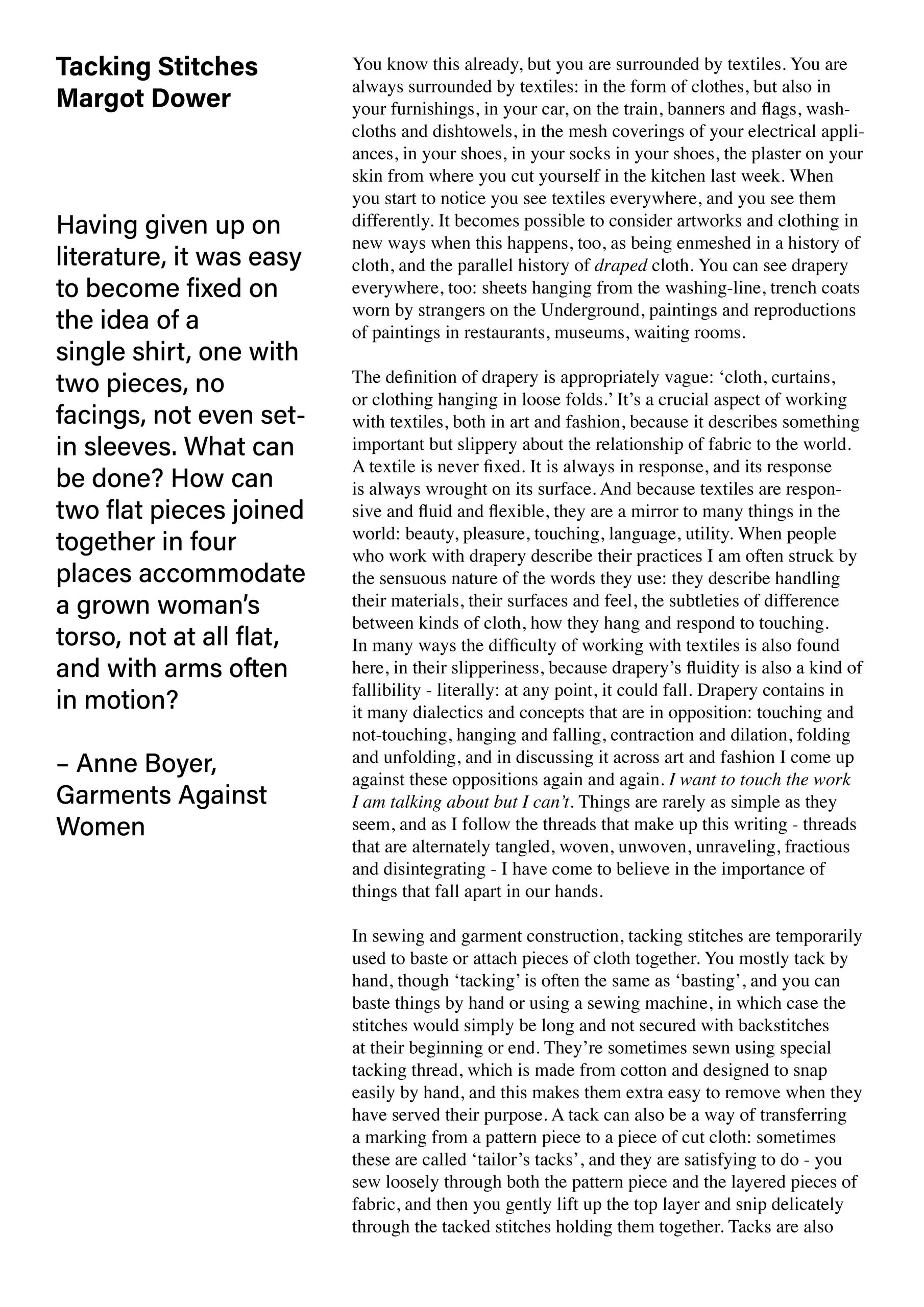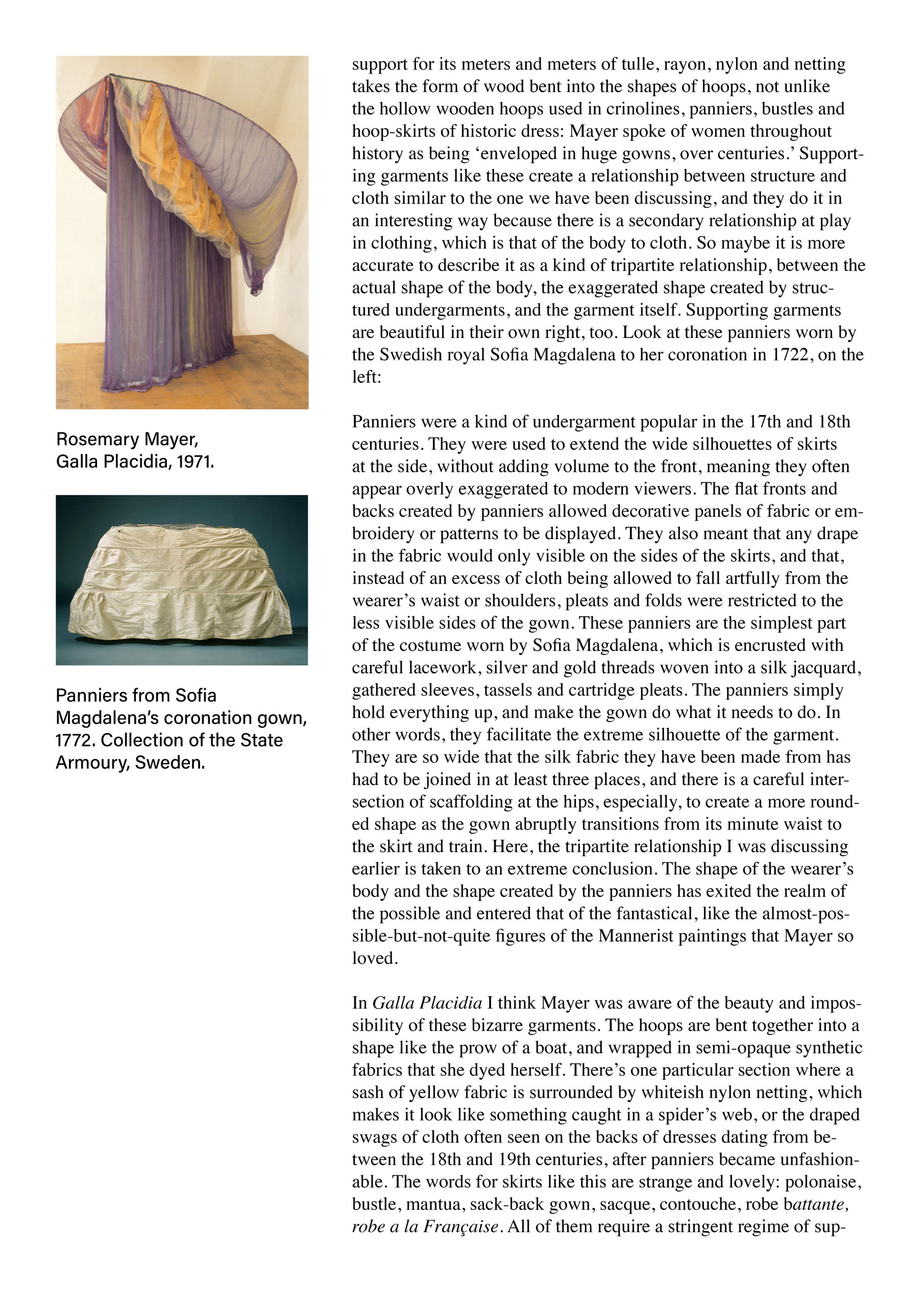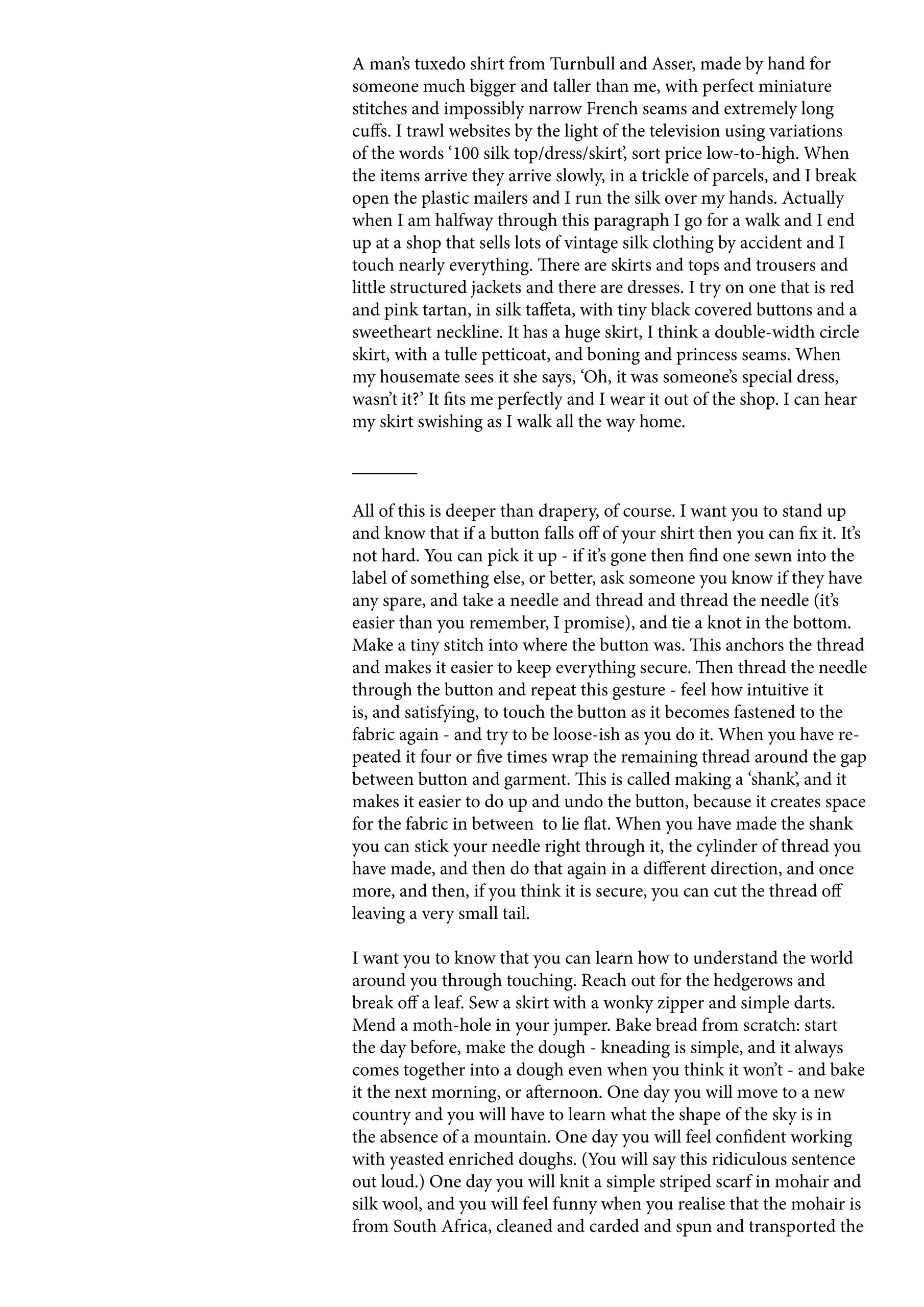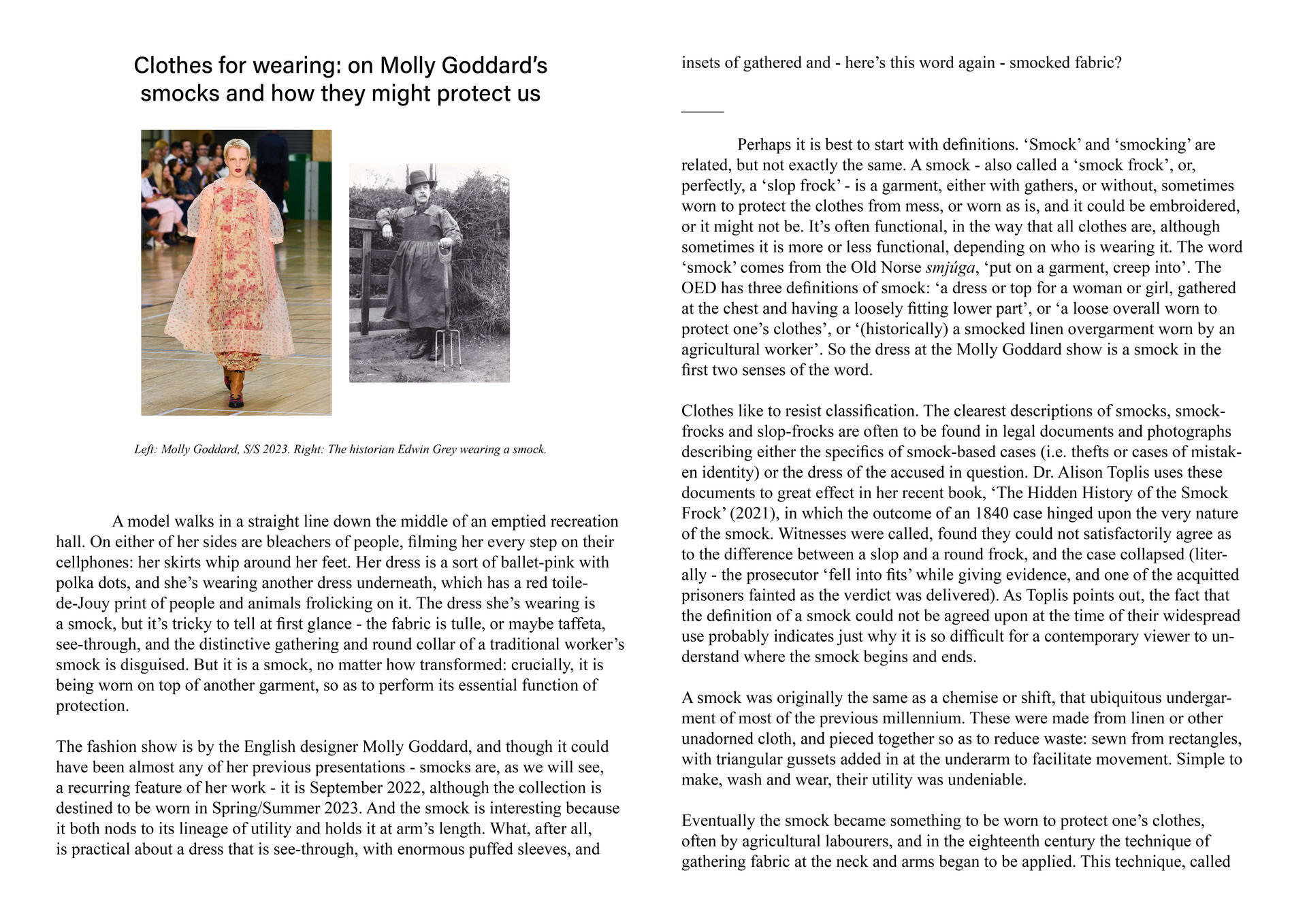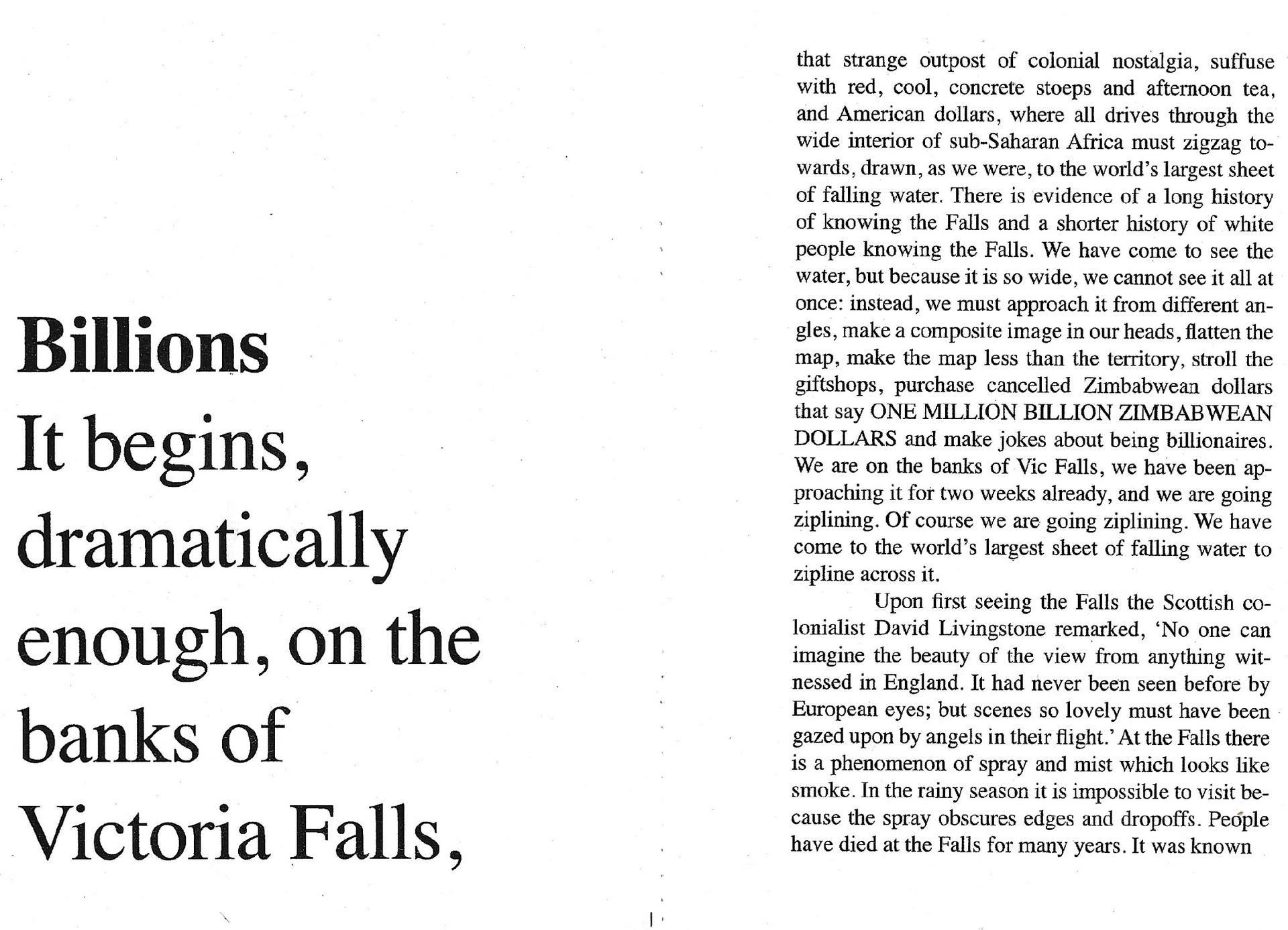Margot Dower (she/her) is a writer and printmaker from Cape Town living and working in South East London. She is interested in care and tenderness, and textiles, and other soft things, and how they intersect with the stickiness of justice and implication. Her independent research project Tacking Stitches is about draped textiles, tactility and intuition, and she has previously written about mending, archives, luxury fashion and the history of the worker’s smock, among other things. Her practice includes making clothing, cooking, writing, and walking around Peckham Rye. She has worked in non-profit arts institutions and small galleries, and has a degree in Fine Art from the University of Cape Town majoring in printmaking and art history.
Margot Dower


Tacking Stitches is about drapery, textiles, tactility and intuition. It is also about art and clothing, and about describing the places where they touch: in the pleats of a sculpture and the pleats of a dress, in the structures that hold things up, in the drop of cloth as it falls to the floor. It is about moving countries and the practices that will hold you when you get there.
In sewing and garment construction, tacking stitches are temporarily used to baste or attach pieces of cloth together. You mostly tack by hand, though ‘tacking’ is often the same as ‘basting’, and you can baste things by hand or using a sewing machine, in which case the stitches would simply be long and not secured with backstitches at their beginning or end. They’re sometimes sewn using special tacking thread, which is made from cotton and designed to snap easily by hand, and this makes them extra easy to remove when they have served their purpose. A tack can also be a way of transferring a marking from a pattern piece to a piece of cut cloth: sometimes these are called ‘tailor’s tacks’, and they are satisfying to do — you sew loosely through both the pattern piece and the layered pieces of fabric, and then you gently lift up the top layer and snip delicately through the tacked stitches holding them together. Tacks are also used to hold the vents and pockets of garments in place while they move from the factory to the shop floor: they correctly position things, make sure that nothing is sagging or sitting funny. Sometimes when I am walking around I see people wearing coats with vents at the back still tacked shut, and I want to go up to them and snip them open so the garment can hang correctly. A tack’s most important feature is its temporality. It is never permanent.
